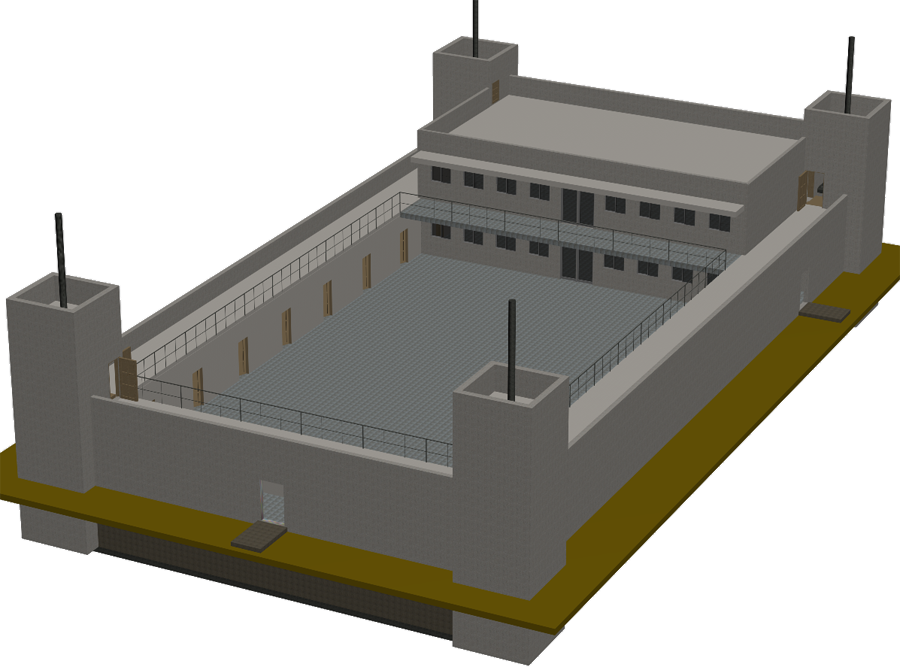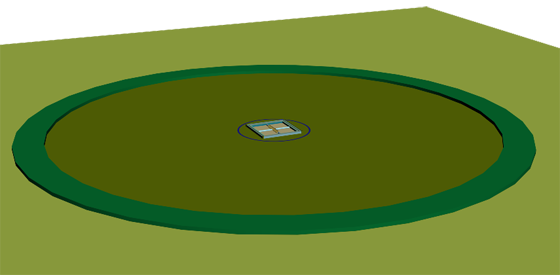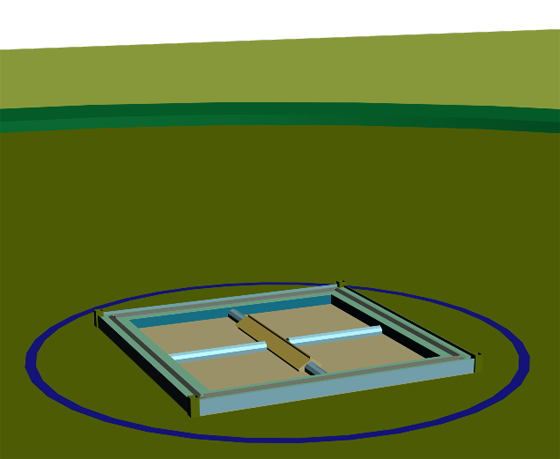Design for Survival
Survival Retreats
A survival retreat can be thought of as a lifeboat. As long as everything is going well you might stroll the deck or rearrange the deck chairs, but you're not going to hang out in the lifeboat. Still, you definitely want there to be one and to know that you'll have a place in it should an iceberg cometh. The Titanic had lifeboats, just not enough. The society in which we are now cruising headlong into futurity has...pretty much none.
Bad design.
If you want your family and significant others to have a secured place on a lifeboat (should something hit the fan), then you have to either buy one, make one yourself, or commission one to be made. Society—the government, isn't going to provide one, and if you wait until you need one, it'll be too late.
A survival retreat is like Robert Frost's definition of home: it's a place where, "when you have to go there, they have to take you in." To have a Plan B home to go to, you'll have to pay for it. The money spent can be thought of as a kind of survival insurance.
Unlike other insurance where you make payments over time for a promise of a future payment should some specified event occur (in currency you hope will be worth something), survival insurance involves buying something real now—like a few years supply of food and other necessities, and a secure place to keep it where you can retreat to and live until conditions improve. Pay now, use later.
Given that all your money and investments may not buy you a loaf of bread at some point, spending some of it now for a lifeboat, or at least for a seat on one, might be a good idea. If you just have enough money to pay next month's rent, then this, sadly, won't be an option for you. If you have obscene amounts of money, you can go it alone and build a private retreat for just your family, but most families will need to consider more modest options.
The retreats being considered here are designed for multi-family survival. Large retreats with adequate but modest accommodations will minimize the cost per person allowing significant numbers of people to buy-in and secure a place onboard. Obviously there will never be lifeboats enough for everyone, just those who think ahead and can afford to part with some money now. The advice to diversify your investments should include nonmonetary investments, especially ones that could save your life and that of your loved ones.
A survival retreat might look something like:

Survival Villages
The other option, far more radical in terms of life style changes, is to abandon ship now and seek to create a small island of sustainability in the vast Sea of Consumption. The difference between a survival village and other intentional communities with an interest in sustainable living is that there is also an interest in having a defensive strategy. If there is a breakdown of the surrounding society, then there may be a period of time when, among other unpleasantness, marauding gangs could become a threat. The ability to meet various foreseeable threats has to be included in the design of the village. For this reason villages need to be well designed, then built, then populated. But until there is a waiting list, they won't be built.
Every design will have to be specific to a given location, but just to give an idea of what a survival village would look like, here's how a village for about 500 people might be planned.
Let's say the group has 3,200 acres (1,295 hectares). The first question is how much should be used for people (and their plants and animals)? This is functionally the same as asking how much of the Earth should humans claim dominion over? The answer could be 100%. By inference, most people living in the current growth culture would say 95%. When about 95% of something (a species population, estuaries, riparian habitat, a forest) has been lost, then conservation measures start to be implemented if only to preserve the remnant for human recreational use. If you include recreational use, then the answer would approach 100%. Current land use planning considers only uses; the possibility of non-use does not arise. If you think the entire planet does not belong to one species, or you think it unwise in the long-term to regard Earth as "a planet for the taking," then you'll have to march to a different drummer.
So let's say the villagers decide that 20% is enough and so select 640 acres (1 sq. mile or 259 ha) of the 3,200 acres for their use. Naturally, the land most suitable for agriculture would be selected. Since any land available today has probably long been put to use, or "developed," it would not be possible to preserve 2,560 acres (1036 ha) in a "natural state" that no longer exists. Instead, the villagers would have to help restore 80% to something that increasingly resembled, as the years passed, a natural state—while at the same time intensively developing their 640 acres to meet their needs.
The best way to get along with nature is to separate the land you're claiming from it. You don't want herbivores eating your crops, nor predators eating your livestock, so a good exclosure fence would be the first thing to put up ("good fences make good neighbors"). To prevent encroachment from outside, another exclosure fence around the entire property might be needed to keep other people and their livestock (but not wildlife) out of the non-use area.
Within the 640 acres the villagers might plant trees for wood, fruit, and/or nuts (climate permitting). Let's say 140 acres are used for silviculture and form a circle just inside the inner wildlife exclosure fence. Within this ring, on the remaining 500 acres, would be agricultural fields and the village itself. The village would be located in the middle of the fields and clustered rather than sprawling, since it would be obvious to all that the larger the village, the less land for agriculture there would be—so about six acres would actually be plenty. The village would be inside a high defensive wall having a walk-around. Imagine a ring of two story structures enclosing a large public square with greenhouses, park-like settings, and open-air facilities within. With half a mile of open fields surrounding the village, marksman on the perimeter wall would be able to protect crops and mount a defence should the need arise.
A better plan would be to cluster multiple villages in an area. Let's say there's an area of 6,400 acres of good agricultural land. Divide it into 10 villages and have a surrounding non-use area of 25,600
acres for wildlife (or 64,000 acres surrounded by 256,000 acres). By clustering the villages, each is better protected as cooperation between villages would be easier. Clustering villages also improves social life and allows for greater trade, specialties, and economic diversity in an area. Each week a different village could invite surrounding villagers to a meetup festival. Special interest groups could draw members from all the villages in an area. Transportation between villages could be by walking, biking, or electric vehicle.
Surplus production could support cities, but if societal collapse occurs, cities will be the focal point. Sustainable villages have to come first if sustainable cities are to be supported, and this hasn't been done yet. There is an urgent need to create sustainable villages. Even committed urbanites should understand this and be willing to help support the villages they utterly depend upon.
In the best of all possible worlds the villagers would buy the 640 acres and a non-profit organization, something like the Nature Conservancy, would help acquire the 2,560 acres that the villagers would serve as caretakers of.
It might actually be easier to build a survival village than a survival retreat since those interested in the village option could relocate from anywhere in the world while to build a 500-person survival retreat would require finding 500 people living within a few hundred miles of the retreat location who are willing to invest in the construction of it. Villages would cost more, require a total commitment, but the first one would require finding only 500 people (about 380 adults, 120 children) out of 7 billion who are willing and able to do so.
Here's a visual: 3,200 acres total with 640 acres in the circle. In the 640 acres is a ring of 140 acres of trees. Within that, nearly 500 acres of farmland, and the small circle contains the village itself.

Inside the 80% nature preserve is the 640 acres, the remaining 20% the humans claim. An exclosure fence is outside the 140 acres of cultivated trees, and inside is the almost 500 acres of agricultural crop land.

The village itself is in the middle of the crop land, and it is encircled by a pond used as a mote and for aquaculture.

The village is a double square ring of two-story buildings separated by a covered walk around that could also accommodate bicycles and electric vehicles. The central long house is for community group use accessed through four greenhouses that connect it to the outside buildings. This creates four courtyards for community use. Outside the walls and inside the pond are four multi-use open areas.
A preferred variation would be to have multiple interconnected villages in a small agricultural area surrounded by a much larger nature preserve. Multiple clusters of villages would then connect to and support a city, deriving occasional goods and services in return. This would approximate a sustainable model for a civilization that is not dependant on extravagant energy and resource consumption.
So you have some options: Invest in a survival retreat or join a survival village. Either way, you'll want to know more, lots more.
Survival Retreat Net Site Map
- •Home Page: Enjoy the Cruise
- •Expect the Expected
- •Understand the Exponential Function
- •A Tale of Two Islands
- •Island Ethics
- •Design for Survival
- •Personal Pods: The basic unit of dwelling
- •Survival Retreats: For when you have to go
- •Example of a Pod Retreat Design
- •Survival Villages: Sometimes it takes a village
- •Join a Survival Retreat
- •Join a Survival Village
External Links
- Survival Retreat Design Team
- Survival Village Design Team
- Eating Fossil Fuels
- Enjoy life while you can
Survive by design.
Survival ASAP by design.
Article: Energy Bulletin, 2003, Dale Allen Pfeiffer.
Article: The Guardian, 2008, James Lovelock.